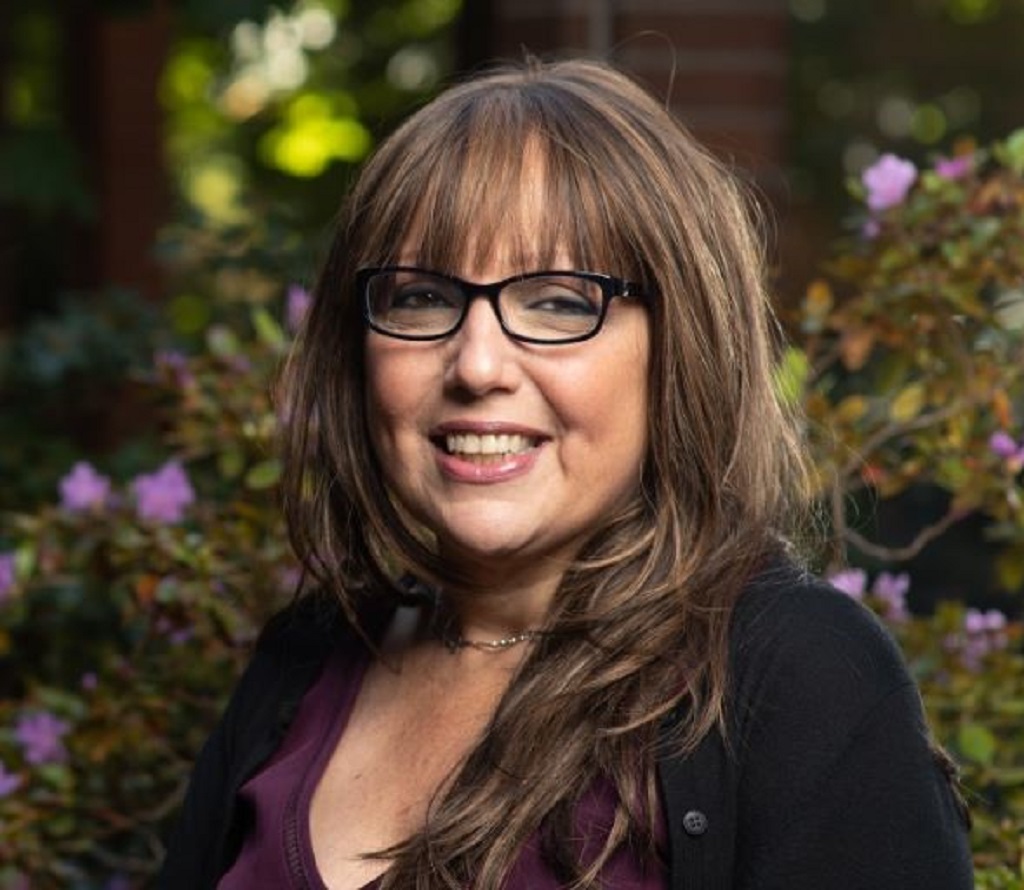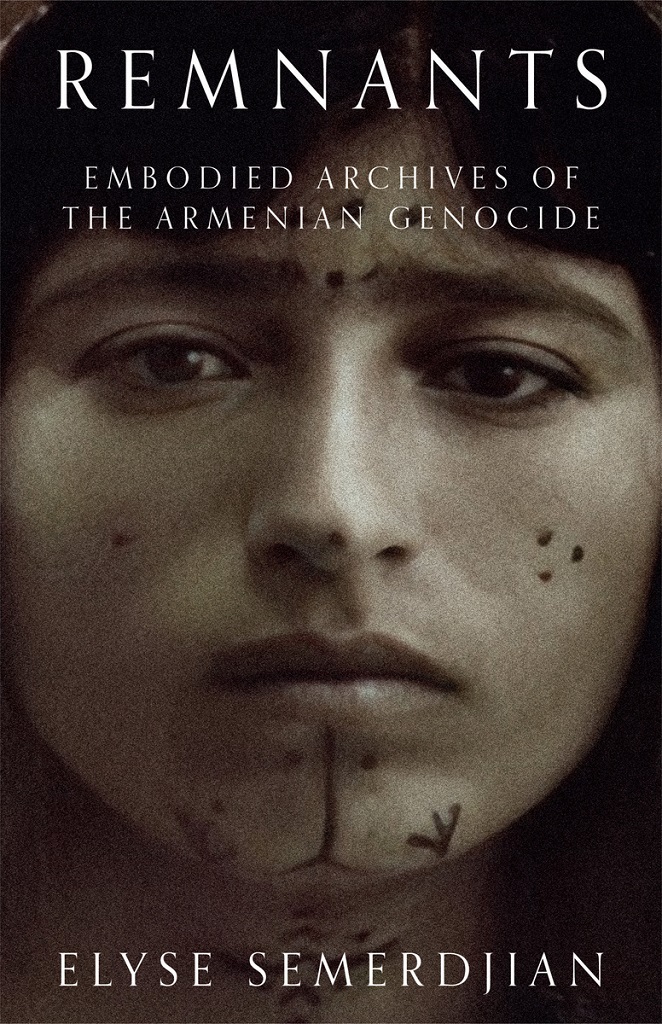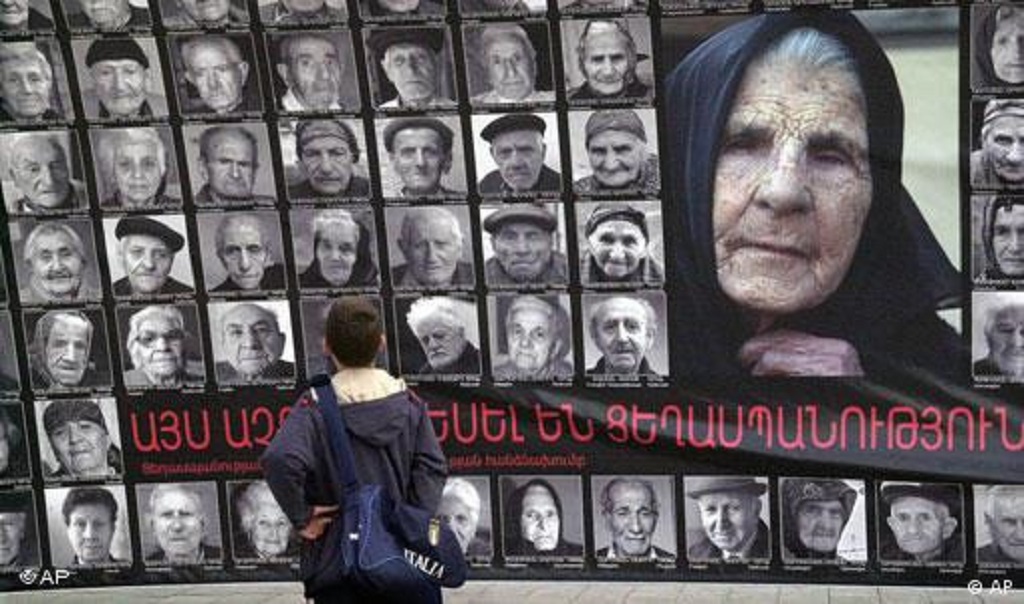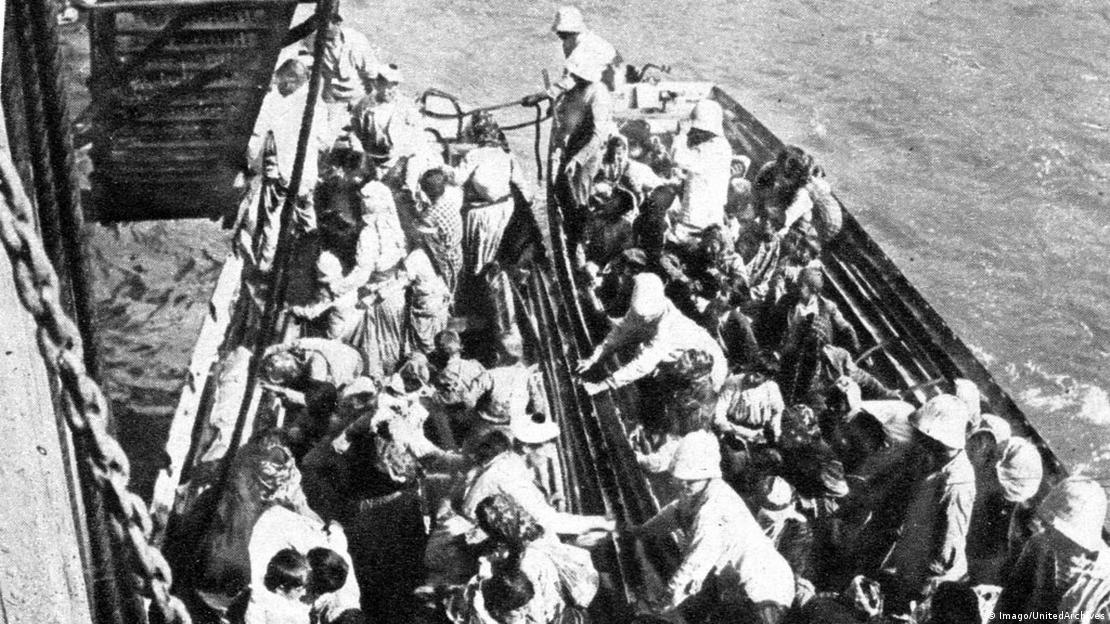"Genocide is a feminist issue"

Elyse Semerdjian, your new book, "Remnants: Embodied Archives of the Armenian Genocide", tells the story of Armenian women who survived the Armenian genocide in the Ottoman Empire (1915-23) and deportation to the Syrian desert.
The history of the genocide was literally inscribed on the bodies of dozens of Armenian women – through tattoos applied by Arabs, Kurds or Roma in their new surroundings. "These blue marks meant stigmatisation and humiliation for Armenian women", reads a description at the Genocide Museum in Yerevan, Armenia's capital. Your book aims to broaden our understanding of these tattoos. How so?
Elyse Semerdjian: For me, the tattoos have a different meaning given the context in which they were applied. To Armenian women themselves, such tattoos were completely foreign. Identical to the tattoos of women in local communities, they were created as part of the process of cultural assimilation during the genocide.
This does not mean that tattooed Armenian women did not feel shame: in the book, I give the example of Aghavni Kabakian, who went to huge lengths to get her tattoos removed in Constantinople after the First World War. I am interested in why these tattoos were applied and why they produced shame and feelings of otherness.
Slavery and rescue
How would you describe the connection between the tattoos and the cultural assimilation of Armenian women into their new Muslim environments?
Semerdjian: There is the example of Serpouhi Tavoukdjian who settled close to Manbij. In her memoirs, she talks about the Turkish gendarmes who would search the area for Armenians. After one such close call, her Arab adoptive father decided she needed to get tattooed for her own protection.

She understood the situation as she had been living in this community for some time. Other Armenian women and girls who were being tattooed had no idea of what was going on around them.
Indeed, there is no one story and there are different versions of events. These include the slave auctions of Armenian women and girls.
Slave traders gave them seemingly arbitrary tattoos so that they would not stand out from the crowd. This was done to secure the slave owners' property, minimising the risk that Turkish gendarmes would find and kill the Armenian women.
Today, the tradition of female tattoos has largely faded in the Middle East. How were you able to understand the meanings of the different tattoos?
Semerdjian: We have some information provided by those women who still wear them. Often, we see vegetative motives. These tattoos represent a rite of passage for the women, to bless them with fertility as they start to become childbearing.
Then there are other tattoos that are medicinal, warding off evil and illnesses. Those can also be found on male Armenian survivors. During my research, I found evidence of two men.
They were not so much tattooed on the face but on their hands. Some markings also connect people to a particular tribe.
Additionally, a couple of books on the subject have been published in Turkish over the last ten years. The tattoos are considered cultural heritage, especially among Kurdish communities. The first book I encountered had been published in the city of Mardin. Yet, the meaning of the tattoos can be very fluid. While, for example, the tattoo of a crescent moon may symbolise Islam for some, its origin is possibly Zoroastrian or even more ancient.
The victims' perspective
Trying to understand these different layers, you blend the fractured archival sources with your own "autoethnographic voice". This method, which builds on the researcher's own personal experiences and – in your case – family history, is still rather unorthodox in historical research.
Semerdjian: I used to write history very differently: Whatever the document said, I would transcribe obediently and try to interpret from there. By doing so, we may be rewriting history in a way that those who experienced it would strongly object to.
Many historians still believe their subject is an objective science. There is an empirical drive to prove the Armenian genocide which has become a kind of a trap – looking for the one document that will say "the Ottoman Empire did this intentionally and these are the reasons". We have handed over the game by constantly privileging the archive of the perpetrator…

…who – in the form of modern-day Turkey – largely refuses to take responsibility for the past, let alone recognise the Armenian genocide.
Semerdjian: We have the necessary evidence to prove our case. My work is a critique of the field of history, not just studies of the Armenian genocide. But it is also about inserting a kind of feminism into studies on the topic, because genocide is a feminist issue.
No genocide without patriarchy
In what sense?
Semerdjian: You don't get genocide without patriarchy, because genocide is about pulling apart a community at its core. And at least in these patriarchal societies – whether we're talking about the Jews in Nazi Germany or about Armenians, Assyrians, and Greeks whose communities were assaulted by the Ottoman Empire – it is about pulling apart the family first to halt reproduction.
Genocide is a feminist issue, especially when those bodies are appropriated by another community to birth a different nation. That is what happened to the Armenians. And since feminism is personal by nature, I inserted a part of myself into the research, only to find out that a lot of my family history has been lost to me.
Autoethnography is a feminist approach to deal with those kinds of gaps in knowledge, to be frank and honest about what we can know as historians and what we cannot know.
The way we understand the tattoos of Armenian women survivors today is largely informed by the Western press of the time, which often depicted the women in a sensationalist and Orientalist way. Where does this stem from?
Semerdjian: During the late 19th century, modern humanitarian publications started printing salacious, sometimes outlandish stories about Armenian women in a bid to boost circulation, while also encouraging people to donate to the cause. In the course of this, some female survivors were described as prostitutes, but there's no evidence they were.
Expressive of Victorian sensibilities, tattoos in the West were associated with sailors and prostitutes. Some of the depictions are cartoonish, semi-nude Armenian women, such as Aurora Mardiganian…

…a genocide survivor who would reenact her ordeal of (sexual) violence in the very successful film "Auction of Souls" (1919), raising funds in the U.S. for Armenian relief efforts.
Orientalist perception
Semerdjian: Such depictions date back to debates about white slavery in the 19th century, which were also connected to the Ottoman Empire and the institution of the harem as a place where sultans tortured women.
Armenians did, in fact, need international attention. Some of the framing was, however, undeniably informed by Orientalist tastes and conventions. Anthropologist Lila Abu-Lughod, author of "Do Muslim Women Need Saving", influenced my thinking in this regard.
Even today – whether we're talking about Yazidi or Afghan women – there is this drive to feminise the subject of humanitarianism to make women worthy of rescue, while eliding other aspects of violence that affect men, women, and children equally – such as war.
At the Rescue Home in Aleppo, which was set up by Danish humanitarian Karen Jeppe and supported by the League of Nations, many of the tattooed women survivors we know today were first photographed. Often, Jeppe herself would engage in Orientalist discussions. Was this a pragmatic choice to raise money or based on her own bias?
Semerdjian: We have not fully addressed all of Jeppe's aspects. Her case shows the extent to which the Armenian genocide also affected humanitarians who witnessed it. Jeppe herself suffered from PTSD and suicidal ideation. I know of no-one outside the community who was as invested in saving Armenians as she was.

She is often referred to as the "mother of the Armenians", this is how much she is beloved, and she's buried not so far from my grandparents in Aleppo – in the Armenian cemetery. This is unheard of for non-Armenians. Her work was supported by Bedouin allies. Yet she also believed that Armenians were somehow superior and more European.
Karin Jeppe: "Mother of the Armenians"
How did the local communities react to the missions carried out by Jeppe and her allies?
Semerdjian: Some men did react, as the rescue missions were seen as a violation of Muslim patrimony. Interestingly, a son of Hadjim Pasha – a Bedouin chieftain who was one of Jeppe's allies – had held an Armenian women captive for over a decade. When she escaped, Hadjim Pasha had to intervene.
What was amazing was how King Faisal I, ruler of Syria and Iraq, responded to the issue as his rule in Damascus began. In articles published in his own newspaper, he called on Arabs to return Armenian women. Many complied. One of the women affected was Aghavni Kabakian, mentioned at the beginning of this article. The Muslim with whom she had been living brought her personally to Jeppe's home.
To him, she was his adoptive daughter, and he was afraid for her. So this was a painful goodbye. But, in retrospect, Kabakian admitted to having been happy to rejoin the Armenian community.
Once they arrived at the Rescue Home, Jeppe and her team were very invested in reconnecting the 2000 survivors they cared for during their years there with their roots: teaching them Armenian, finding remaining family members and setting up Armenian colonies inspired by Zionist ideas. Yet for the tattooed women, they carried a visible reminder of the genocide. How easy was it for them to reintegrate into Armenian communities and rebuild their lives?
Semerdjian: According to Jeppe's registry, Armenian orphans would sometimes marry each other. In images of Jeppe's colonies, we can see some of the Armenian men wearing kufiyyahs. Perhaps those Armenians who had lived among other communities were looking for someone with similar experiences. There is no evidence that these women were particularly shunned.
Some of their fellow Armenians understood that the women felt ashamed and assured them that the tattoos were beautiful marks of survival and courage. But there are a few historians like Lerna Ekmekcioglu and Vahe Tachijan who have uncovered some tensions surrounding these women within the wider community.
Understanding the mechanisms of genocide
What were these tensions about?
Semerdjian: Some Armenians were uneasy with women who had spent time among Muslims. But there was also a drive to reconstitute the community, resulting in conflicting feelings. Some Armenians were more than happy to take in the women and their children from Muslim husbands, whom they sometimes brought with them and whom they formed into Armenians, even though questions of paternity should have been raised.
These discussions may remind us of Yazidi women and their children, following their return from captivity at the hands of Islamic State. Are such comparisons helpful when trying to understand the legacy of the tattooed Armenian women survivors or should they be avoided?
Semerdjian: I think there should be more comparative studies in the field of genocide studies. Working in this field can be hard because there is very little justice done to the victims. But I am glad that the Yazidi case has highlighted how gender helps us understand the mechanisms of genocide and the targeting of women and girls in this specific way.
Many Armenian women could not talk about what happened to them because what they experienced was so fraught with shame. By contrast, for many Yazidi women, speaking out about what they went through has become vital testimony. I hope their witness will lead to justice. To some kind of reckoning with what took place.
Interview conducted by Anna-Theresa Bachmann
© Qantara.de 2023
Elyse Semerdjian: "Remnants: Embodied Archives of the Armenian Genocide", published in English by Stanford University Press
Elyse Semerdjian is an American historian with Armenian-Syrian roots. She is a professor of Modern Armenian History and Armenian Genocide Studies at Clark University. Her work focuses on gender, sexuality, and the history of Syria and the Ottoman Empire.